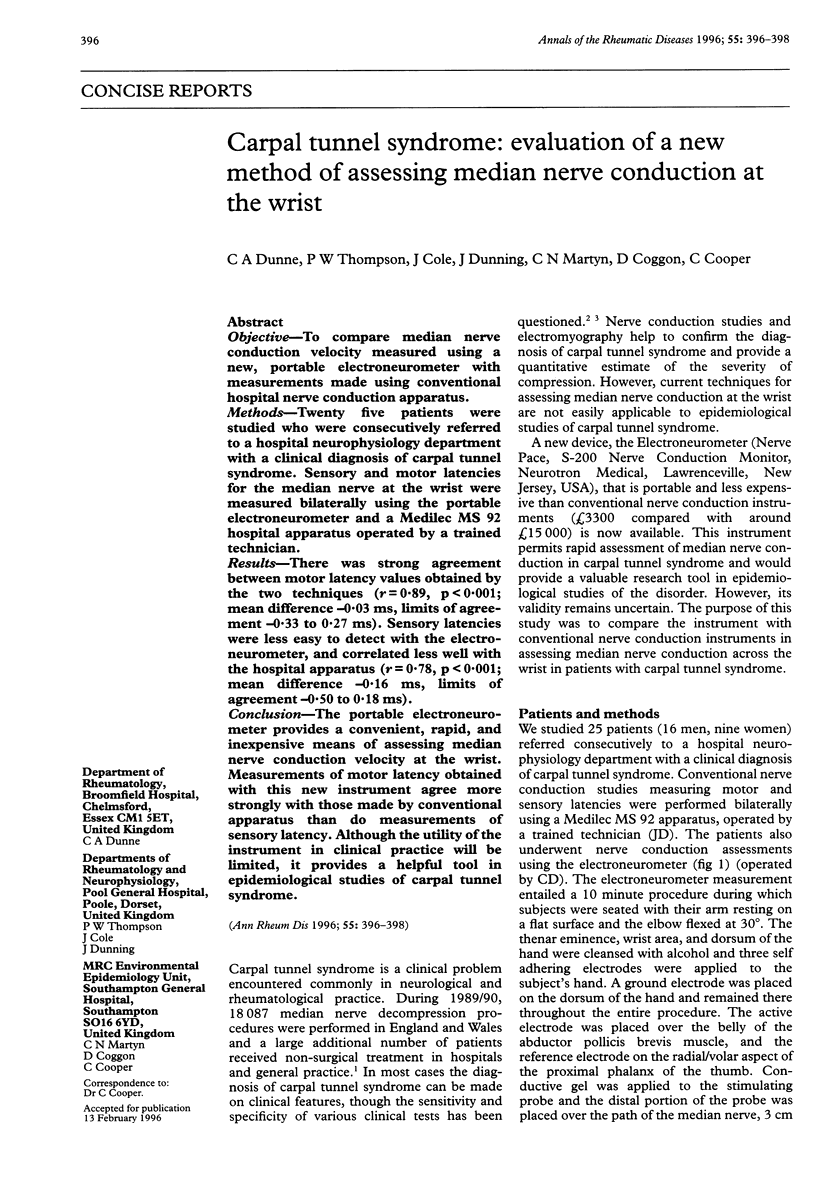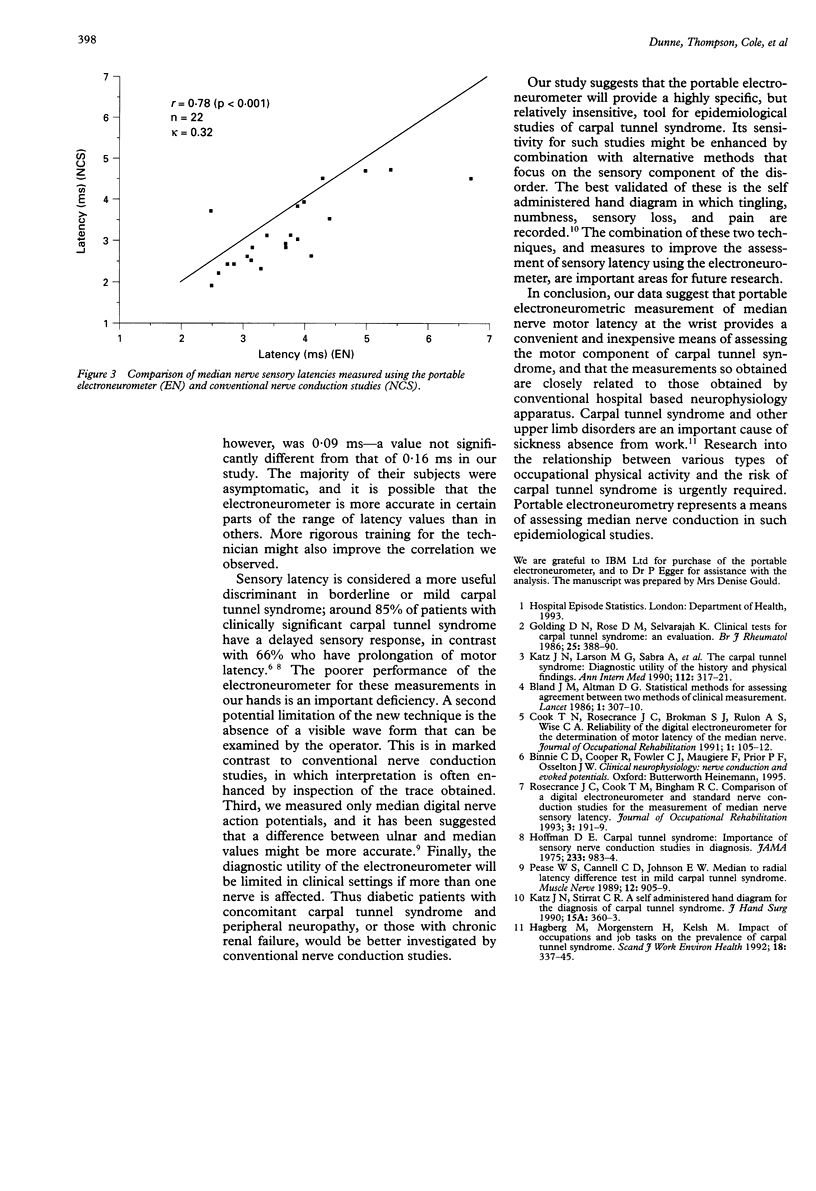Abstract
OBJECTIVE: To compare median nerve conduction velocity measured using a new, portable electroneurometer with measurements made using conventional hospital nerve conduction apparatus. METHODS: Twenty five patients were studied who were consecutively referred to a hospital neurophysiology department with a clinical diagnosis of carpal tunnel syndrome. Sensory and motor latencies for the median nerve at the wrist were measured bilaterally using the portable electroneurometer and a Medilec MS 92 hospital apparatus operated by a trained technician. RESULTS: There was strong agreement between motor latency values obtained by the two techniques (r = 0.89, p < 0.001; mean difference -0.03 ms, limits of agreement -0.33 to 0.27 ms). Sensory latencies were less easy to detect with the electroneurometer, and correlated less well with the hospital apparatus (r = 0.78, p < 0.001; mean difference -0.16 ms, limits of agreement -0.50 to 0.18 ms). CONCLUSION: The portable electroneurometer provides a convenient, rapid, and inexpensive means of assessing median nerve conduction velocity at the wrist. Measurements of motor latency obtained with this new instrument agree more strongly with those made by conventional apparatus than do measurements of sensory latency. Although the utility of the instrument in clinical practice will be limited, it provides a helpful tool in epidemiological studies of carpal tunnel syndrome.
Full text
PDF


Images in this article
Selected References
These references are in PubMed. This may not be the complete list of references from this article.
- Baker E. L., Ehrenberg R. L. Preventing the work-related carpal tunnel syndrome: physician reporting and diagnostic criteria. Ann Intern Med. 1990 Mar 1;112(5):317–319. doi: 10.7326/0003-4819-112-5-317. [DOI] [PubMed] [Google Scholar]
- Bland J. M., Altman D. G. Statistical methods for assessing agreement between two methods of clinical measurement. Lancet. 1986 Feb 8;1(8476):307–310. [PubMed] [Google Scholar]
- Golding D. N., Rose D. M., Selvarajah K. Clinical tests for carpal tunnel syndrome: an evaluation. Br J Rheumatol. 1986 Nov;25(4):388–390. doi: 10.1093/rheumatology/25.4.388. [DOI] [PubMed] [Google Scholar]
- Hagberg M., Morgenstern H., Kelsh M. Impact of occupations and job tasks on the prevalence of carpal tunnel syndrome. Scand J Work Environ Health. 1992 Dec;18(6):337–345. doi: 10.5271/sjweh.1564. [DOI] [PubMed] [Google Scholar]
- Hoffman D. E. Carpal tunnel syndrome. Importance of sensory nerve conduction studies in diagnosis. JAMA. 1975 Sep 1;233(9):983–984. doi: 10.1001/jama.233.9.983. [DOI] [PubMed] [Google Scholar]
- Katz J. N., Stirrat C. R. A self-administered hand diagram for the diagnosis of carpal tunnel syndrome. J Hand Surg Am. 1990 Mar;15(2):360–363. doi: 10.1016/0363-5023(90)90124-a. [DOI] [PubMed] [Google Scholar]
- Pease W. S., Cannell C. D., Johnson E. W. Median to radial latency difference test in mild carpal tunnel syndrome. Muscle Nerve. 1989 Nov;12(11):905–909. doi: 10.1002/mus.880121106. [DOI] [PubMed] [Google Scholar]



